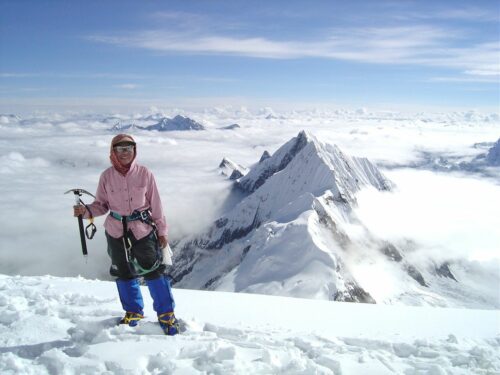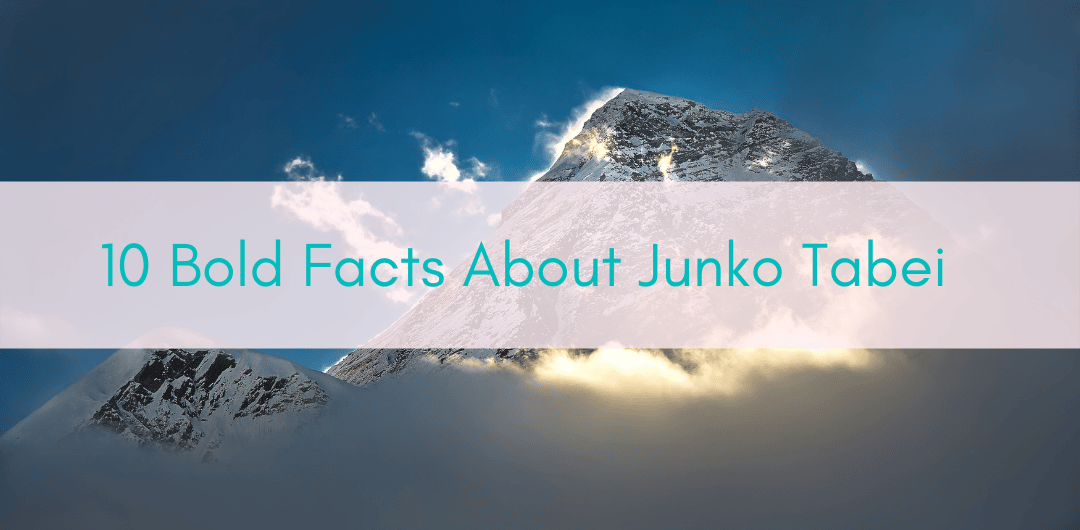There is one woman who can’t be missed in our series about inspiring women in history: Junko Tabei. She was a trailblazer who wore many hats. Tabei is famous not just for her achievements, but for breaking stereotypes about women, both in the Japanese culture and abroad.
10 Bold Facts About Junko Tabei – Inspiration and Trailblazer

1. She discovered her passion early on in life
Junko Tabei was born as Junko Ishibashi in Fukushima, Japan, on 22 September 1939. Despite being a frail child she decided to climb her first mountain when she was a mere ten years old. This was Mount Nasu, and it happened on a class excursion. However, this should be a short foray into the sport. Her family could not afford such an expensive hobby, and Junk only got to climb a handful of mountains until she finished high school.
2. She planned to become a teacher
After finishing high school, Junko Tabei started her studies to become a teacher at Showa Women’s University in Setagaya, Tokyo, Japan.
3. She joined men’s climbing clubs

After her graduation from university, Junko Tabei joined a number of men’s climbing clubs. Some of the men accepted her as a fellow climber, but she received plenty of scrutiny for participating in a typically male-dominated sport from other climbers. Undeterred, she proceeded to climb all of Japan’s major mountains. In 1966, she married Masanobu Tabei, a fellow mountaineer.
4. She empowered other women
Due to the treatment by some of her fellow (male) climbers, being distrustful of her and accusing her to use climbing as a means to find a husband, Junko Tabei took action. In 1969, she established Japan’s first women-only mountaineering club, the Joshi-Tohan Club. Their motto was ‘Let’s go on an overseas expedition by ourselves’. To finance this undertaking, she worked as an editor for the Journal of the Physical Society of Japan.
The club’s first expedition embarked to climb Annapurna III in Nepal in 1970. The club ultimately chose Junko Tabei and Hiroko Hirakawa for the summit team. And they didn’t just summit, no. They did it by a new route on the south side of the mountain. This made them the first females and first Japanese to reach the top of Annapurna III.
5. She had to wait four years to get a permit for Mount Everest
Following the success at Annapurna III, the Joshi-Tohan Club created a team named the Japanese Women’s Everest Expedition. They applied for the necessary climbing permit in 1971, but it took four years before they finally got the green light. This plan did not fit well into the traditional way of Japanese women, which made it difficult to find sponsors for the expedition. At the last minute Yomiuri Shimbun newspaper and Nippon Television stepped up, but that still left each expedition member with a big bill to pay.
6. She was the first woman to stand on top of the world

In May 1975, the team traveled to Nepal for their attempt at Mount Everest. They were planning to follow the route that Sir Edmund Hillary and Tenzing Norgay took for their attempt in 1953. On May 4, their camp was struck by an avalanche, burying Junko Tabei and four others climbers. Luckily, the six Sherpas who had accompanied the team were able to dig them out, and there were no casualties. The team’s original plan had been to send two women to attempt the summit. Two Sherpas were chose to accompany them, but one of them succumbed to altitude sickness. One Sherpa alone was not able to carry the supply of oxygen needed for two women. The team ultimately chose Junko Tabei to be the one to attempt to summit Mount Everest. On May 16 1975, Junko Tabei became the first woman ever to stand on top of the world. She had conquered Everest.
7. She was catapulted to fame by summitting Everest
Naturally a feat like this drew a lot of attention. However, Junko Tabei was never comfortable with the level of fame she achieved by being the first woman to summit Everest. She continued to climb mountains, but never accepted corporate sponsorship again. Instead, she became a mountain guide, made paid public appearances, and tutored local kids in music and English.
8. She became the first woman to complete the seven summits challenge
You may have never heard of the seven summits challenge. In this challenge, one attempts to climb the highest mountain of each continent. There are:
– Mount Everest at 8849 meters (29,032 feet) in Asia
– Cerro Aconcagua at 6961 meters (22,837 feet) in South America
– Mount McKinley (Denali) at 6190 meters (20,310 feet) in North America
– Kilimanjaro at 5895 meters (19,341 feet) in Africa
– Mount Elbrus at 5642 meters (18,510 feet) in Europe
– Mount Vinson at 4892 meters (16,050 feet) in Antarctica
– Carstensz Pyramid at 4884 meters (16,024 feet) in Oceania
In 1992, Junko Tabei successfully summitted Carstenz Pyramid and thus became the first woman in the world to complete the seven summits challenge, an extraordinary feat that until today has only been achieved by a select few hundred people.
9. She became a successful author & climbed with children
Junko Tabei wrote and published seven books during her lifetime, such as Honouring High Places: The Mountain Life of Junko Tabei. After the devastating earthquake in Japan in 2011 she started to organize an annual guided excursion up Mount Fuji for schoolchildren affected by this terrible disaster.
10. She had an asteroid and a mountain range on Pluto named after her
In 2012, she was diagnosed with stomach cancer. She succumbed to the illness on 20 October 2016. To honor the incredible achievements of her life, an astronomer named an asteroid after her before her death. In 2019, a mountain range on Pluto was named Tabei Montes to honor Junko Tabei, mountaineer extraordinaire.
Her Adventures is an education and empowerment community dedicated to helping women explore beyond their boundaries. We welcome all people who identify as non-masculine/non-male to connect, educate and inspire each other with their stories, fears, knowledge, questions, and ideas. Because together we make each other strong. We hope you will join us and see the world.
Topics
Subscribe
Subscribe for news, updates, giveaways, and more!
JOIN GIRLS WHO TRAVEL
Join our inclusive community
of tens of thousands of women who
share your passion for travel in our
Girls Who Travel Facebook group!








